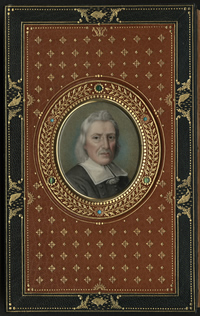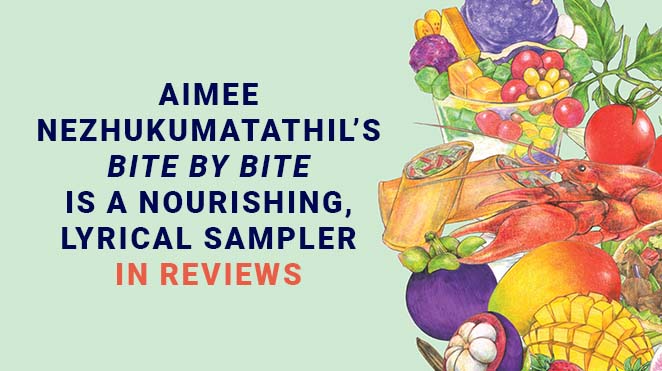The rising popularity of the ebook has caused a lot of handwringing among book lovers, but Vanderbilt University’s Book as Art: Beautiful Books exhibition offers evidence that digital books will never completely replace bound volumes. Just as music sales today are split between the pure information of the mp3 download and the sensuous delights of heavy black vinyl packaged in gatefold sleeves, many industry watchers believe printed books will become increasingly sophisticated and specialized in a bid to appeal to the collector as well as the reader. If they’re right, the pages from the past on view at Vanderbilt will give book lovers a glimpse of the future.
 The books in the exhibition belong to the university. The Netty Hale Rand Collection of Fine Bindings and Print found its way to Vanderbilt in 1944, providing the impetus for developing an expanded fine-bindings collection at the university. “It’s the kernel around which the Beautiful purchases have been made,” says Kathy Smith, associate director of special collections, who curated the exhibit. A sprawling spectacle, Beautiful Books spills across the Vanderbilt campus: the Peabody Library hosts an exhibit of children’s books, a show of religious works is on display at the Divinity Library, and a presentation of musical notation can be found at the Martha Rivers Ingram Center for the Performing Arts. The primary exhibits can be found at the Central Library and the Special Collections and University Archives Library.
The books in the exhibition belong to the university. The Netty Hale Rand Collection of Fine Bindings and Print found its way to Vanderbilt in 1944, providing the impetus for developing an expanded fine-bindings collection at the university. “It’s the kernel around which the Beautiful purchases have been made,” says Kathy Smith, associate director of special collections, who curated the exhibit. A sprawling spectacle, Beautiful Books spills across the Vanderbilt campus: the Peabody Library hosts an exhibit of children’s books, a show of religious works is on display at the Divinity Library, and a presentation of musical notation can be found at the Martha Rivers Ingram Center for the Performing Arts. The primary exhibits can be found at the Central Library and the Special Collections and University Archives Library.
This show is a book fetishist’s fever dream, filled with antique manuscripts, handmade paper, tooled leather, gilded designs and jewel-encrusted books from American, European, and Canadian presses. While the show also includes examples of artists’ books—which are handmade, imaginative extensions of the traditional book—it’s the fine bindings that take center stage in Beautiful Books.
Modern fine binding can be thought of as a throwback to medieval bookbinding. Before the invention of the printing press and the advent of mass literacy, all books were one-of-a-kind works by highly-skilled artists and artisans, handwritten and decorated on handmade materials. The oldest book in the Beautiful Books exhibit is a book of hours that dates back to 1480. Other medieval examples include the leaf of a liturgical missal, a page from a Bible, and a page from a copy of the Nuremberg Chronicle, a history of the world from creation to 1493. Vanderbilt’s edition is particularly valuable: it’s the last one published before news of Christopher Columbus’s discovery changed the European world view forever.
Friar Jerome’s Beautiful Book: AD 1200 is a hand-illustrated copy of a hand-illustrated volume. “It’s just gorgeous in its colors and its gilding,” notes Smith. A late-comer to calligraphy at age forty-three, the copyist, Alberto Sangorski, showed a prodigious talent for decorating illuminated texts: his masterpiece was an illuminated volume of the Rubaiyat of Omar Khayyam. A highlight of the exhibit also features poetry: a case entirely devoted to editions of Charles Baudelaire’s classic Les Fleurs du Mal. “Vanderbilt has the most complete collection of Baudelaire in the world,” says Smith. The volumes on display in Beautiful Books range from a 1947 edition illustrated by Henri Matisse to a 2000 edition decorated with cyanotype prints.
 Some of these books demand to be judged by their covers. Visitors will find their eyes lingering on a collection whose covers are decorated with small watercolor-on-ivory portraits of the book’s author. These are examples of the “Cosway binding”—a reference to Richard Cosway, the English portrait artist who specialized in miniature painting. His influence on the form was so pervasive that he became the namesake of binding styles that include similar miniature portraits.
Some of these books demand to be judged by their covers. Visitors will find their eyes lingering on a collection whose covers are decorated with small watercolor-on-ivory portraits of the book’s author. These are examples of the “Cosway binding”—a reference to Richard Cosway, the English portrait artist who specialized in miniature painting. His influence on the form was so pervasive that he became the namesake of binding styles that include similar miniature portraits.
A number of the books on display threaten to become purely aesthetic objects. This tendency is particularly exemplified by a hand-embroidered copy of the Oxford Book of English Verse. This book has remained in print, readily available, since it was first published in 1900, and an e-version is available for free online. Clearly, a laboriously decorated version like the one in Beautiful Books isn’t strictly necessary for reading. Instead, the text and its history lend a context to the elaborate stitching. Likewise, The Complete Angler of Izaak Walton and Charles Cotton—tooled and gilded with a lovely trout motif, and a Cosway-style portrait of the author surrounded by an arrangement of turquoise and emeralds—is not exactly practical for riverside reading. Perhaps the most unusual “book” in the collection is Un Souvenir de la Famille Bourbon, a reliquary disguised as a book. Created by a lady-in-waiting for the Bourbon family, the book’s thick pages are inset with curls of human hair, bits of flags, and other tiny memorabilia that spell out the history of a royal family in a book without words.
Book as Art: Beautiful Books continues at Vanderbilt University’s Jean and Alexander Heard Libraries through August 12, 2012. For more information, click here.





